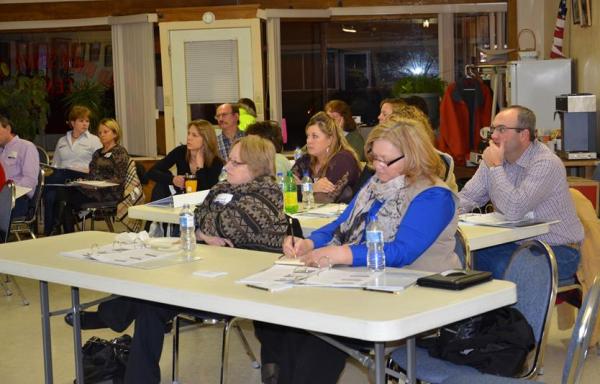As director of planning for Accomack-Northampton Planning District Commission, Curtis Smith hoped the last week in October would be the start of a data-driven process to develop innovative ideas for economic development on Virginia’s Eastern Shore. The outcome more than exceeded his expectations.
Forty-six Eastern Shore residents and community leaders representing more than 30 vital organizations to the region arrived promptly at 8:30 a.m. at Eastern Shore Community College on Oct. 27. The wind was chilled and gray skies threatened rain, but each time the doors leading to the college’s Grand Hall opened, Smith was met with a warm smile from a hopeful community member. The earnest presence of each member made it clear that there is a unifying goal to address a need on the Eastern Shore.
The residents were arriving to be part of Stronger Economies Together (SET), which helps regional counties, cities and towns come together to work as teams in pursuit of shared economic advancement. Tuesday was the Civic Engagement Forum, the first meeting in the SET process, which offers an opportunity for residents to engage in discussions about the assets of the their communities and the issues that might be limiting.
Community leaders Bedford Rogers and George Ayers, president and vice president of the nonprofit Concerned Citizens for Improvements, Inc., expressed the importance of community involvement in the SET initiative.
“The Eastern Shore is in dire need of development,” Ayers said. “We’ve got a lot of poor folks here and a lot of unfortunate circumstances that could be made a lot better if people would take the time to commit themselves and their money to developing the Eastern Shore.”
Bedford agreed, stating that the region is an economically distressed area with a high rate of poverty and unemployment. Like many in attendance, Bedford was happy to see the region working together to combat these issues with the initiative originally launched by USDA Rural Development in 2010.
“We are certainly looking towards the federal, state and local government as well as private individual corporations who will come in and give us any assistance that they can afford,” said Bedford.
As the meeting began, leaders were encouraged to mingle outside of their respective organizations through random seating to maximize thought-provoking discussion. The hall hummed with high energy as members shared experiences, excitements and concerns. In several interactive activities, members were able to interpret regional data and identify regional strengths, challenges and opportunities as USDA Rural Development staff helped facilitate.
By the members evaluating what they already knew, they were better able to delve deeper to question what they didn’t know—and why they didn’t know it. The answer was simple. The research hasn’t been exploited yet. Members asked, what is the migration to the Eastern Shore by age? Are people coming to the shore to retire? Is there more in-depth aquaculture and agriculture data? What are the education trends? What are some localized key economic indicators?
This process not only produced innovative ideas for development but it also introduced untapped data requests. With this knowledge, the Eastern Shore can better prepare to develop strategically.
Martha Walker, Ph.D, of Virginia Cooperative Extension and member of the Virginia SET resource team said she recognized that members expressed eagerness to come back to dig deeper into the regional data at the next meeting.
“We generated a lot of excitement and it is going to be our responsibility to keep that wave going,” Smith said.
The four planned community meetings will conclude in March 2016 for both current SET regions and implementation of the economic development plans will follow close behind.
The Eastern Shore is the fourth region with which Virginia’s USDA Rural Development office and Virginia Cooperative Extension have worked in the SET process. Two regions have completed the process and one is completing it concurrently with the Eastern Shore. A fifth will be announced in November.
USDA Rural Development partners closely with Virginia Cooperative Extension, Virginia Department of Housing and Community Development, and the Southern Rural Development Center to make these economic development plans a reality, but all of the groups are facilitators—not prescribers.

